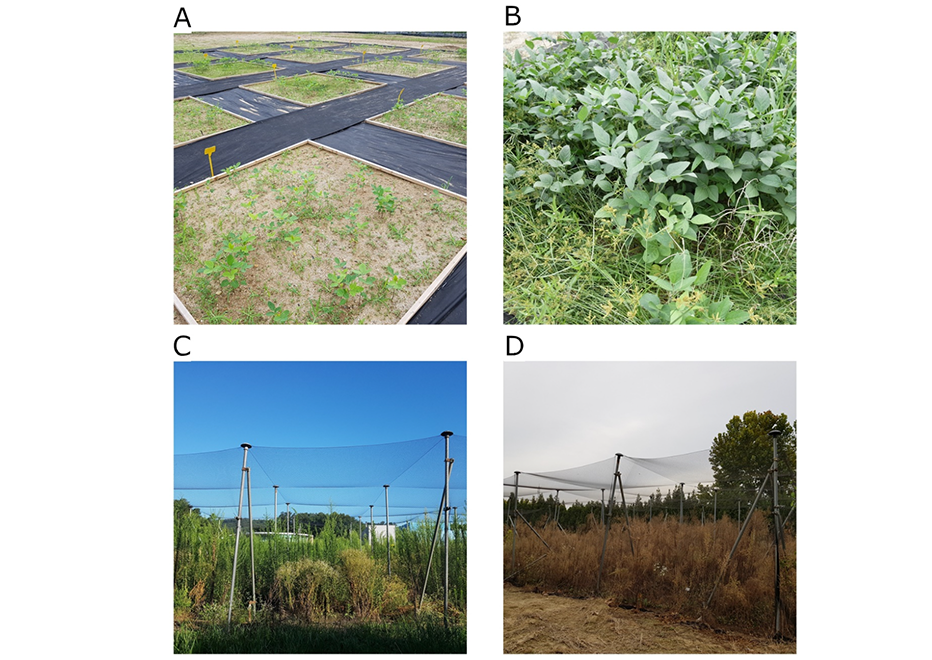Abstract
The invasiveness or weediness of genetically modified (GM) crops is considered as one of the major environmental concerns regarding the cultivation of these crops. This study was conducted to evaluate whether three events of GM soybeans expressing human epidermal growth factor gene (
Figures & Tables

Fig. 1. Representative photographs of the field plots for assessing the persistence of genetically modified (GM) soybean expressing human epidermal growth factor gene. The photos were taken on (A) 20 July 2017, (B) 30 August 2017, (C) 31 July 2018, and (D) 23 October 2019, respectively.


